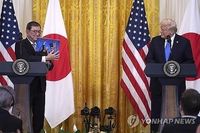South Korea is making bold moves to reshape its economic future, unveiling a sweeping set of strategies aimed at cementing its place among the world’s biohealth and export powerhouses. On September 5, 2025, President Lee Jae Myung took center stage at the Songdo Convensia exhibition hall in Incheon, just west of Seoul, to announce the government’s ambitious “K-Bio Leap Strategy.” The plan, which was outlined before an audience of about 130 industry leaders, government officials, and stakeholders, is designed to double the nation’s biohealth industry exports by 2030 and propel South Korea into the ranks of the world’s top five biohealth exporters.
But the K-Bio Leap Strategy is just one part of a broader push by Asia’s fourth-largest economy to diversify export destinations, reduce reliance on traditional partners like the United States and China, and tap into new, rapidly growing markets. According to The Korea Economic Daily, South Korea’s top trade negotiator, Yeo Han-koo, recently revealed a parallel focus on Southwest Asia—particularly Bangladesh—as a key target for expanding trade and investment.
At the heart of the K-Bio Leap Strategy are several concrete objectives. The government aims not only to double biopharmaceutical exports, which reached US$5.8 billion in 2024 and currently place South Korea around 10th globally, but also to foster the development of three new blockbuster drugs and secure a spot as the world’s third-largest hub for clinical trials by 2030. These goals come as the global pharmaceutical market, valued at $1.74 trillion in 2024—three times the size of the semiconductor market—continues to grow at an average annual rate of 4.7 percent. Biopharmaceuticals, a key segment, are expanding even faster, at 11.9 percent per year, according to government data cited by Yonhap.
President Lee Jae Myung struck an optimistic note at the seminar, emphasizing the country’s strengths. “We will incorporate feedback from the seminar to swiftly implement the K-Bio Leap Strategy and foster the biohealth industry as a sustainable growth engine,” he said. Lee also pointed to South Korea’s “outstanding research talent and a world-class manufacturing base,” arguing that the nation has what it takes to become a global bio powerhouse.
To help speed up the commercialization of new biosimilar drugs—a field in which South Korea is already a global contender—the government plans to shorten the regulatory review period for biosimilars from 406 days to 295 days. In addition, the time required for new drugs to be listed for reimbursement under the national health insurance program will be slashed from 330 days to 150 days. These reforms are expected to make South Korea an even more attractive destination for clinical trials and pharmaceutical investment.
While the biohealth sector is a major focus, South Korea’s ambitions do not end there. In a separate but related development, Trade Minister Yeo Han-koo outlined a new export strategy that targets Southwest Asia as a promising new market. “We focus on Southwest Asia as our initial target region within the Global South markets,” Yeo told The Korea Economic Daily on September 4, 2025. He highlighted the region’s massive population—2 billion people, or about 25% of the global population—and its “immense growth potential as an attractive consumption market.”
Bangladesh, in particular, has emerged as a linchpin in South Korea’s new trade calculus. In August 2025, the two countries held their first round of negotiations on a Comprehensive Economic Partnership Agreement (CEPA), which seeks to deepen economic ties in areas ranging from investment and trade in services to intellectual property and regulatory cooperation. Bangladesh, with its 170 million people and status as the world’s second-largest clothing manufacturing hub, has been growing at a brisk 6-7% annually, driven by its abundant labor and natural resources.
“Bangladesh has sustained rapid economic growth—6-7% annually on average—over the past several years, driven by abundant labor and natural resources,” Yeo said. South Korea is already the fifth-largest investor in Bangladesh, with more than 100 Korean companies operating manufacturing facilities there. Leading the charge is Youngone Corp., an original design manufacturer for major foreign outdoor brands like The North Face and Nike.
Despite these investments, bilateral trade between South Korea and Bangladesh stood at a modest $1.98 billion in 2024, placing Bangladesh 54th among Seoul’s trading partners. Yeo believes that a CEPA will provide a much-needed boost to trade, citing the example of South Korea’s CEPA with India, signed in 2010. Since then, bilateral trade with India has more than doubled, and South Korean investment in the country has nearly quadrupled.
South Korea’s export diversification strategy also extends to Southeast Asia. The government plans to accelerate free trade negotiations with countries like Thailand and Malaysia, as the ASEAN bloc (comprising Brunei, Cambodia, Indonesia, Laos, Malaysia, Myanmar, the Philippines, Singapore, Thailand, and Vietnam) becomes an increasingly important trading partner. In August 2025, South Korean exports to ASEAN countries totaled $10.9 billion, surpassing shipments to the US ($8.7 billion) and nearly matching those to China ($11.0 billion).
Many developing countries in the Global South are seeking technology cooperation in manufacturing sectors such as semiconductors, electronics, electric products, and automobiles. Against this backdrop, South Korea is positioning itself as a partner of choice, promising to pursue “tailored trade agreements with other Global South countries, including those in the Middle East, Central and South Asia and Africa,” as Yeo noted.
These twin strategies—the K-Bio Leap for the biohealth sector and a concerted push into new export markets—are not just about boosting numbers on a balance sheet. They reflect a broader effort to future-proof South Korea’s economy in an era of shifting global dynamics and rising competition. With 90% of its gross domestic product driven by trade, South Korea can ill afford to stand still. Recent US tariff hikes have already put pressure on Korean exporters, underscoring the urgency of finding new partners and growth engines.
President Lee’s administration appears determined to seize this moment. By betting big on biopharmaceuticals and leveraging new trade partnerships across Asia and beyond, South Korea is signaling its intent to not just keep pace with global trends, but to help set them. For a country that has long punched above its weight in technology and manufacturing, the next chapter may well be written in the labs of Songdo and the factories of Dhaka.
As these plans move from paper to reality, all eyes will be on how swiftly and effectively South Korea can turn its vision into results—both for its own citizens and for the broader global marketplace.




